#Kyôto
Photo






Samedi
Conduits par mon gendre, nous avons bravé le froid pour découvrir le temple Sanjusangendo dans une ambiance rouge et verte, comme un clin d’oeil à Noël. Ce temple immense (XIIe siècle) abrite 1001 statues en bois laqué, presque grandeur nature et recouvertes d’or, célébrant le dévot Kannon Bodhisattva (repro du guide car les photos sont interdites à l’intérieur). Nous nous sommes réchauffés à la cafétéria du Musée national de Kyôto situé juste à côté. Celui-ci se prépare à fêter le Nouvel an et à célébrer l’année du lapin. Pour mémoire, le Kid est né l’année du cheval et le Mini Kid celle du chien.
14 notes
·
View notes
Note
"rn I feel like reading about someone's quiet daily life, maybe a diary or letters, set in a place or context I don't know much about, without turmoil or tragedy" oh! do you have any recommendations for books like this?
This is one of my favourite types of books! Here are 30(ish) recs...
May Sarton's The House by the Sea or Plant Dreaming Deep
Gyrðir Elíasson's Suðurglugginn / La fenêtre au sud (not translated into English unfortunately!), also Bergsveinn Birgisson's Landslag er aldrei asnalegt / Du temps qu'il fait (exists in German too)
Gretel Ehrlich's The Solace of Open Spaces, which iirc was originally written as journal entries and letters before being adapted into a book
Kenneth White's House of Tides: Letters from Brittany and Other Lands of the West
Sei Shonagon's Pillow Book
The Diary of a Provincial Lady, E. M. Delafield
Growing Up with the Impressionists: The Diary of Julie Manet
Elizabeth and Her German Garden by Elizabeth von Arnim (do not read if you don't like flowers)
The Road Through Miyama by Leila Philip (I've mentioned it before, it feels like this gif)
The Sound of a Wild Snail Eating, I keep recommending this one but it's so nice and I love snails
Epicurean Simplicity, Stephanie Mills
The Light in the Dark: A winter journal by Horatio Clare
The Letters of Rachel Henning
The letters of Tove Jansson, also The Summer Book and Fair Play
The diary of Sylvia Townsend Warner—here's an entry where she describes some big cats at the zoo. "Frank and forthcoming, flirtatious carnivores, [...] guttersnipishly loveable"
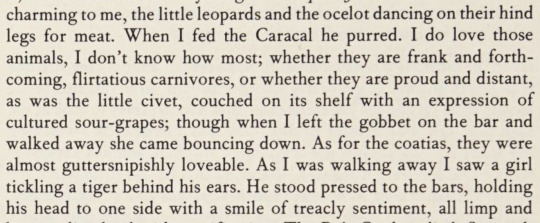
The Letters of Rachel Carson & Dorothy Freeman were very sweet and a little bit gay. I mostly remember from this long book I read years ago that Rachel Carson once described herself as "retiring into her shell like a periwinkle at low tide" and once apologised to Dorothy because she had run out of apple-themed stationery.
Jane Austen's letters (quoting the synopsis, "Wiser than her critics, who were disappointed that her correspondence dwelt on gossip and the minutiae of everyday living, Austen understood the importance of "Little Matters," of the emotional and material details of individual lives shared with friends and family")
Madame de Sévigné's letters because obviously, and from the same time period, the letters of the Princess Palatine, Louis XIV's sister-in-law. I read them a long time ago and mostly I remember that I enjoyed her priorities. There's a letter where she complains that she hasn't received the sausages she was promised, and then in the next paragraph, mentions the plot to assassinate the King of England and also, the Tartars are walking on Vienna currently.
Wait I found it:

R.C. Sherriff's The Fortnight in September (quoting the author, "I wanted to write about simple, uncomplicated people doing normal things")
A Tree Grows in Brooklyn, Betty Smith
Pond, Claire-Louise Bennett
Rules for Visiting, Jessica Francis Kane
The following aren't or aren't yet available in English, though some have already been translated in 5-6 languages:
ツバキ文具店 / La papeterie Tsubaki by ito Ogawa
半島へ / La péninsule aux 24 saisons by Mayumi Inaba
Giù la piazza non c'è nessuno, Dolores Prato (for a slightly more conceptual take on the "someone's everyday life" theme—I remember it as quite Proustian in its meticulousness, a bit like Nous les filles by Marie Rouanet which is much shorter and more lighthearted but shows the same extreme attention to childhood details)
Journal d'un homme heureux, Philippe Delerm, my favourite thing about this book is that the goodreads commenter who gave it the lowest rating complained that Delerm misidentified a wine as a grenache when actually it's a cabernet sauvignon. Important review!
Un automne à Kyôto, Corinne Atlan (I find her writing style so lovely)
oh and 西の魔女が死んだ / L’été de la sorcière by Kaho Nashiki —such a little Ghibli film of a book. There's a goodreads review that points out that Japanese slice-of-life films and books have "a certain way of describing small, everyday actions in a soothing, flawless manner that can either wear you out, or make you look at the world with a temporary glaze of calm contentment and introspective understanding [...]"
I'd be happy to get recommendations in this 'genre' as well :)
#book recs#i should have posted this ages ago but i was waiting to finish the book i was reading to see if it#should be added to the list#but in the end it wasn't worthy#sorry for the delay!
2K notes
·
View notes
Photo
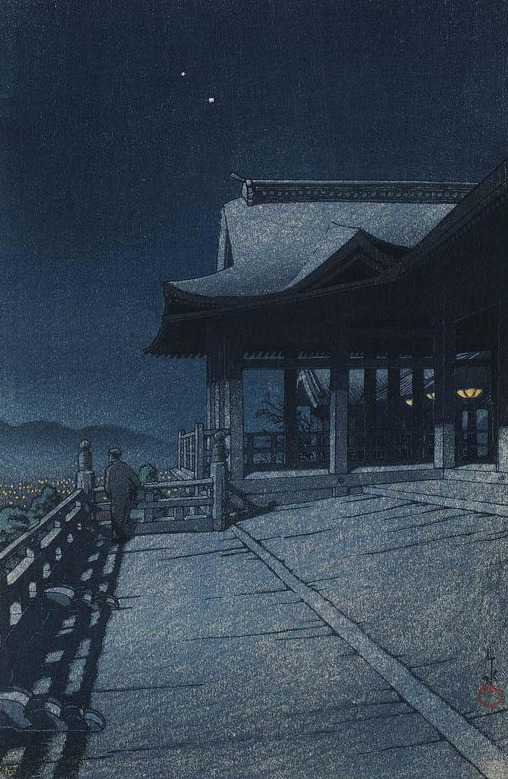
Hasui Kawase (川瀬巴水, 1883 – 1957)
日本風景集 II 関西篇 京都清水寺
Kiyomizu-dera Temple in Kyoto (Kyôto Kiyomizu-dera), from the series Collected Views of Japan II, Kansai Edition (Nihon fûkei shû II Kansai hen)
1933
470 notes
·
View notes
Text

Sakura at Arashiyama (Famous Places of Kyôto), by Utagawa Hiroshige, 1834.
#ukiyo-e#woodblock print#utagawa hiroshige#sakura#cherry blossom#kyoto#it’s a famous print#for good reason
37 notes
·
View notes
Text
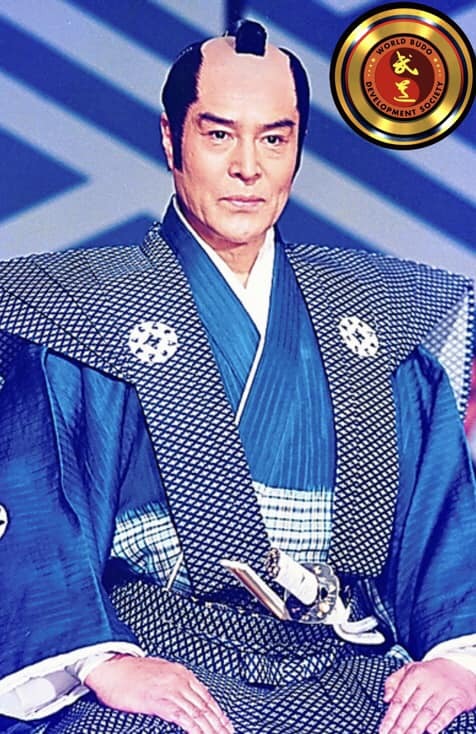
1185-1333 — Kamakura Government
The most important feature of the medieval period is that the samurai (warrior-administrators) replaced the court government in managing local government.
Because the court government had no police force, bands of samurai gained power when the Heian government neglected the administration of the provinces. Samurai strength rested on strong group loyalty and discipline. These bands managed large areas of rice land in eastern Japan, around modern Tôkyô.
In 1185 a new government was founded by the Minamoto family in Kamakura, south of modern Tôkyô. In 1192 Minamoto Yoritomo was given the title 'shôgun' to signify his military control over the country. While it followed the laws of the Heian government, the Kamakura government was run by a network of samurai throughout the country, pledged to keep the peace. Since they exercised real power on the spot, they were able to take over land from rich aristocratic land proprietors and thus caused the Heian government in Kyôto to become even weaker. Gradually the samurai took the lead in developing the law of the nation.
The Mongol invasions, the only military invasion of Japan before World War II, occurred during this period. Khubilai, Great Khan of the Mongols, invaded China and in 1263 became Emperor of China. He pressed his conquest on to Japan. In 1274 and 1281 Mongols and Chinese led great expeditions across the seas to southwest Japan. Samurai in Kyûshû were greatly outnumbered and technically disadvantaged. In 1274, a great storm arose that destroyed or set to sea the whole invasion fleet. In 1281, after 50 days of fierce struggle, the Japanese were again saved by a great storm. These storms became known as kamikaze, divine winds. (More than 650 years later, during the second invasion of Japan, by America, the suicide pilots protecting the islands were called kamikaze, too). The Mongolian attempts to invade Japan united the Japanese against an outside force for the first time in history. Shintô priests, involving the country's deities for protection, were richly rewarded.
1336-1573 — Ashikaga Government
In 1333, the Kamakura shogunate lost control of the country to a rival samurai family, the Ashikaga family. The Ashikaga shogunate moved the capital back to Kyôto, but was not able to assert as much control over the various provinces as the Kamakura government had. In the surrounding countryside, daimyô (provincial barons) ruled the people, and often fought against one other over territorial claims. The daimyô built bureaucratic governments in each province and attempted to bring all elements of society under their military rule. Local rule was more developed that before, but the central government represented by the shôgun was weak.
1600-1868 — Tokugawa Government
In 1600, one of the powerful military families, the Tokugawa, was able to gain military control over all the local daimyô. The Tokugawa created a much stronger bureaucratic military government in Edo, now named Tôkyô. It controlled — either directly or indirectly — all elements of society, such as the agrarian and commercial sectors.
The government legally differentiated four classes of society — samurai, farmers, artisans, and merchants. Since it was concerned with a possible samurai rebellion (it had taken away the weapons of all other classes), the Tokugawa government made the daimyô live part of the time in Edo, the new military capital, and leave their families in Edo as hostages whenever they returned to their domains. Edo became a giant urban center because so many people came to make a living by supplying the huge samurai population. By 1700 there were about one million people living in Edo. In time, the Edo merchants supplying the military became richer than the samurai, many of whom lived in poverty. When Commodore Perry came to Japan from the United States in 1853 seeking commercial relations, many groups in society were ready for changes in the old legal and economic systems. Japan's feudal period ended shortly thereafter with the Meiji Restoration in 1868.
10 notes
·
View notes
Photo

Roger Dumas - Kyôto, Japon. Villa impériale de Katsura (Katsura-Rikyu): Onrin-dô. 1926
3 notes
·
View notes
Text
Balade à Kyôto et expo Mucha
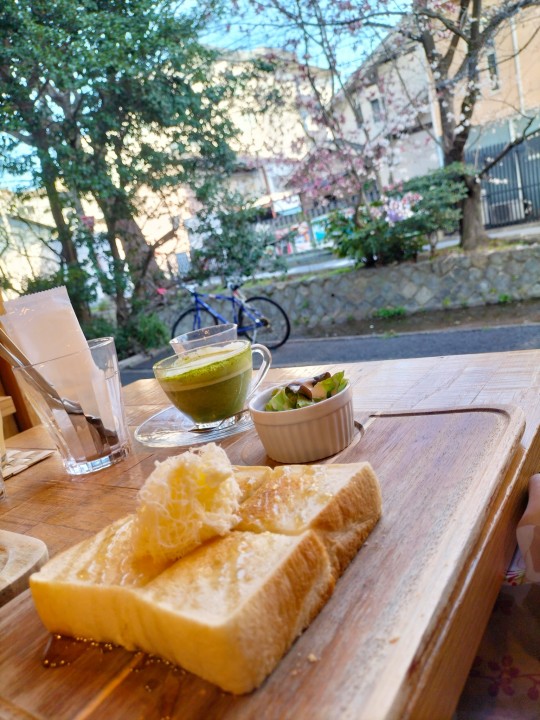




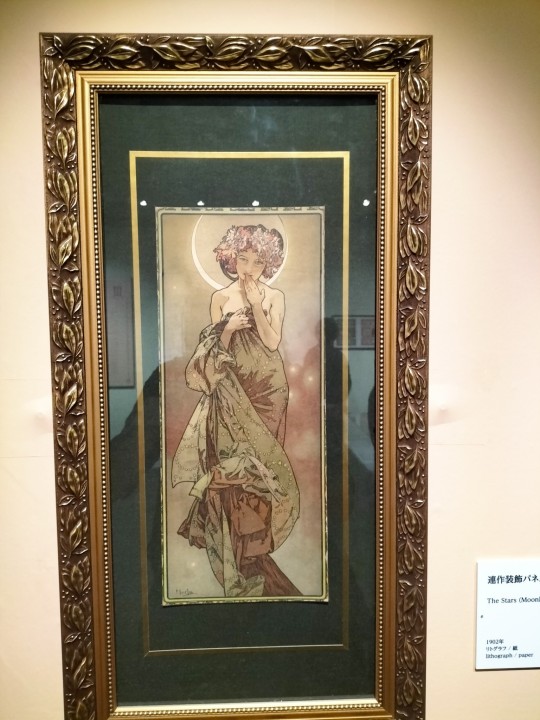
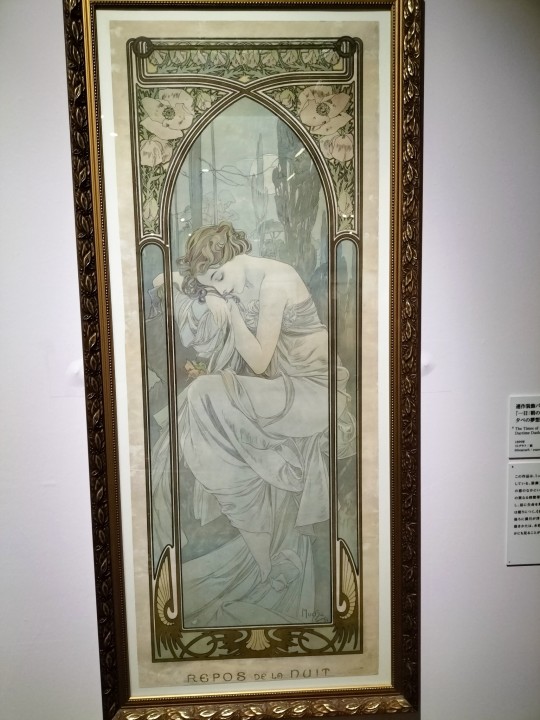



0 notes
Text
How I married an Amagami sister dans la collection Pika Shônen !
How I married an Amagami sister dans la collection Pika Shônen ! Très jeune, Uryû Kamihate a perdu sa mère des suites d’une maladie. Depuis, il n’a qu’un seul objectif : intégrer le prestigieux département de médecine de l’université de Kyôto. Sans le...
source http://www.otakuplayer.fr/2023/02/how-i-married-an-amagami-sister-dans-la-collection-pika-shonen-2.html
0 notes
Text
@fuyumine whispers: “ we are below rock bottom right now . we’re , like , in hell . ” ( maki / @fuyumine ) (sticky situations starters)
“You know, I thought we would never have to face anything worse than Geto-san and his night parade.” Yuuta echoes, a pensive hum rumbling in his chest. There were things they knew back then, and there are things they know now - there were opponents they defeated then (narrowly, clinging to victory by the tip of their nails) and there are opponents that seem too formidable now. When Yuuta got wind of the events unfolding in Japan and jumped onto that plane, he had no idea just how badly things had truly spiralled.
Principal Yaga is gone. Nanami-san is gone. Gojo-sensei is trapped in the prison realm. The Kyôto students are nowhere to be contacted, Panda-kun has all but vanished, and Inumaki-kun is slipping in and out of limbo with an arm torn off that even Yuuta’s reverse cursed technique was too late to save. And next to him, sitting with her back up against a wall in this makeshift hideout their allies have established, Maki-san looks like she has been through hell and back, too.
No, not to hell and back. She’s right: they are still in hell, right here, right now, in this Culling Game.

“I was pretty naive, huh.” He mutters. His head rolls back against the wall behind them, and he casts a glance towards his companion - a familiar instinct telling him to expect retaliation. Maki-san has never let anyone or anything bring her combative spirit down. Even now, as they sit and talk of hell; he half expects her to yank him by the collar of his shirt and ask him if he’s chickening out. He has always admired her for that; so, for once? Maybe he’ll surprise her. “We have to fight back. Everyone is exhausted, but you and I - we have what it takes, don’t we?”
#fuyumine#.INTERACTIONS#thank you for sending prompts! i cannot begin to express how much i love maki#i'm very excited to write for these two and watch them destroy the world while saving it
1 note
·
View note
Text
Liza dalby geisha pdf
LIZA DALBY GEISHA PDF >>Download (Telecharger)
vk.cc/c7jKeU
LIZA DALBY GEISHA PDF >> Lire en ligne
bit.do/fSmfG
Leu repères Les shôgun du clan Tokugawa dirigèrent le japon de geishas eurent Liza Dalby On s'incline, mais le cou bien droit ; si l'on s'agenouille sur Format pdf: 20,43 $. Vignette du livre Geisha · Geisha. Liza Crihfield Dalby. Vignette du livre La Grèce inconnue d'aujourd'hui, de l'autreThere are discussions of how the geisha related to wives and other people, and of how the number of geisha appears to be steadily declining. Where Liza Dalby En 2006, la France découvrait le film "Mémoires d'une Geisha" de Rob Liza Dalby reste la seule femme étrangère à avoir pu entrer dans le monde si. A la fin de cette expérience est né un livre qui porte le nom de « geisha ». C'est donc à Pontocho que Liza Dalby décida de débuter ses recherches. Les geisha de Kyôto appellent d'ailleurs ce lien. 1 AIHARA Kyoko, Geisha, 2 DALBY Liza, Geisha, Petite bibliothèque Payot, Paris, 2003, p. 23 GEISHA. Liza Dalby. Payot, 1985, 26,95 $. Nous avons tous des préjugés envers les geishas. Certains croient qu'elles ne sont que des. Liza Crihfield Dalby, née en 1950, est une anthropologue américaine spécialiste de la culture du Japon.
, , , , .
1 note
·
View note
Photo





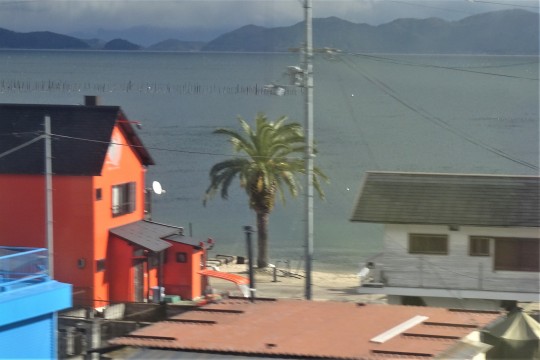

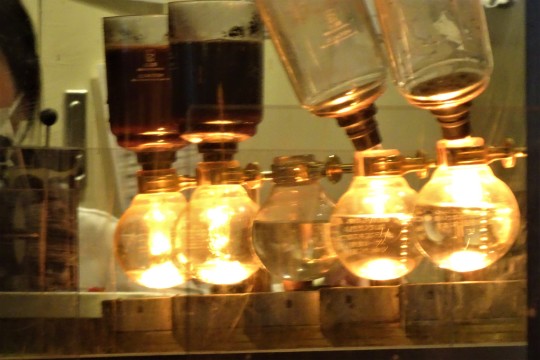

Mercredi
Je rêvais de voir Biwa-Ko (le lac Biwa), le plus vaste lac d’eau douce du pays, et en particulier son torii “flottant”. C’est fait! Le train, qui longe le lac depuis Otsu, nous a laissé à la gare d’Omi-Takashima, d’où un taxi (il pleuvait) nous a conduit jusqu’au Shirahige Shrine. Le soleil a alors eu le bon goût de faire une timide apparition entre les nuages. Face au shrine et plus proche de la rive que ne le font croire beaucoup de photos, le grand torii (portique) rouge qui signale les temples shinto, se dresse au-dessus des eaux, et c’est une vision magnifique. Sur le chemin du retour, j’ai essayé de photographier à travers la vitre embuée du train des maisons colorées construites au bord d’une petite plage, au nord d’Otsu. Arrivés à Kyôto, nous avons acheté une galette des Rois (avec fève et couronne) à la boulangerie Le Petit Mec de la gare, déjeuné à la Kyôto Tower, fait des courses dans un mall et, sur la route pour récupérer le Mini Kid à sa crèche, fait une halte au Coffee-Kan où on plaisante avec les pots de lait, mais pas avec le café. Nous sommes finalement rentrés chez nous à la lumière des lampions, une bonne baguette de pain sous le bras.
12 notes
·
View notes
Text

Título: Río Yodo, de la serie Lugares famosos de Kioto
1834
Artista: Hiroshige Andô/Utagawa (Japón, 1797 – 1858)
Detalles
Otro título: En el río Yodo
Título alternativo: Kyôto meisho no uchi: Yodogawa
Lugar donde se realizó la obra: Japón
Período: Era Tenpo 1830 - 1844 → Periodo Edo (Tokugawa) 1615 - 1868 → Japón
Fecha: 1834
Categoría de medios: Impresión
Materiales usados: grabado en madera; tinta y color sobre papel
Dimensiones: imagen de 22,0 x 35,0 cm; hoja de 22,3 x 35,5 cm
Fecha de firma: Firmado ul, en japonés, tinta, grabado en bloque "Hiroshige ga" [fotografía de Hiroshige]. Sin fecha.
Crédito: Comprado en 1961
Información e imagen de la web de la Art Gallery NSW.
0 notes
Photo
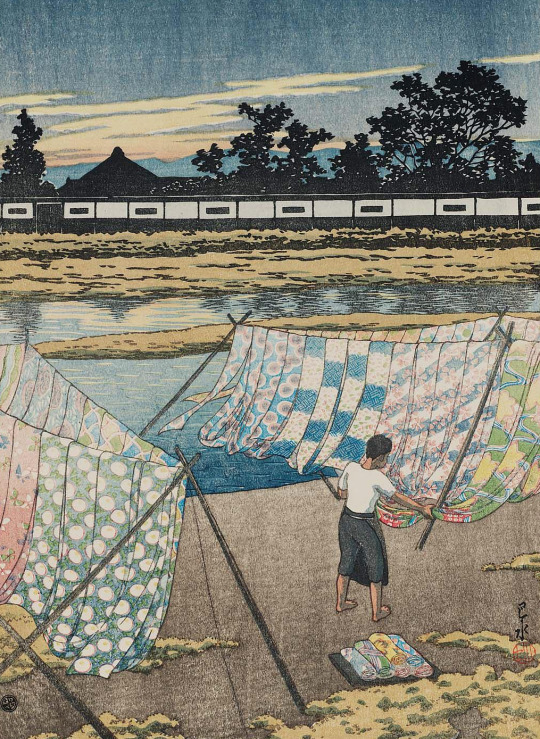
Hasui Kawase (川瀬巴水, 1883 – 1957)
「日本風景選集 京都鴨川の夕暮」
Evening at the Kamo River in Kyoto (Kyôto Kamogawa no yûgure), from the series Selected Views of Japan (Nihon fûkei senshû)
1923
249 notes
·
View notes
Text
Affaires étrangères | Kyôto Animation | Police méfiante
Affaires étrangères | Kyôto Animation | Police méfiante
Dans la revue de presse du lundi 18 juillet, nous aborderons : la visite du ministre des Affaires étrangères sud-coréen, la commémoration de l’incendie de Kyôto Animation, et la police sur ses gardes après des attaques de singe.
(more…)
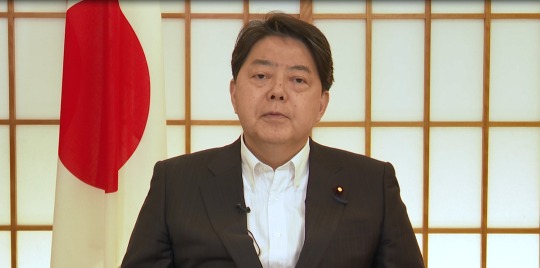
View On WordPress
0 notes
Text

Kyôto street, Japan
15 notes
·
View notes
Photo
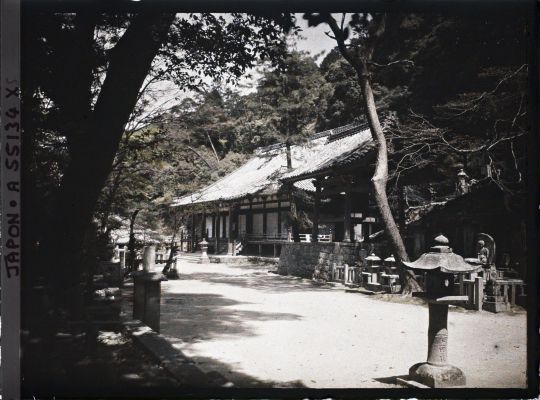
Roger Dumas - Kyôto, Japon. Temple Eikan-dô Zenrin-ji: Amida-dô et beffroi ( shôrô ou shûrô). 1926
1 note
·
View note